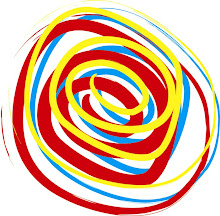The Futurism exhibition currently on at the Tate Modern in London (12 June - 20 September 2009) begins with Marinetti’s vehement 1909 manifesto adulating speed, war and mechanistic progress with unrelenting violence and machismo. From the very beginning we seem repelled by the exhibition’s protagonists. Marinetti calls for the destruction of museums, contempt for women, scorn for the past, militarism.

How then could this movement, so set on an absolute break with the past, turn to such traditional modes of expression as oil painting on canvas and bronze casting? These were the techniques of the Italian Renaissance: Donatello and Verrocchio produced monuments of bronze, while Titian and Veronese put brush to canvas. The Futurists, Italians themselves, had artistic ancestors in the geniuses of the Renaissance. The artistic methods they adopted were steeped in history, the very stuff of the passéisme that the Futurists seemed to abhor. Their style, both in sculpture and in painting is angular and masculine, their subject matter concerned with speed, movement, simultaneity, modern city life, but yet their choice of materials seems at odds with their central ethos. It may be that the Futurists, despite their ambitious manifesto, did not have the imagination to think that artistic expression could be found in anything other than oil paint and bronze. Though perhaps it is more likely that in choosing these materials the Futurists allowed their art to be readily recognised as art by the general public, allowing them to reach an audience who may have dismissed their work before even looking at it had it been expressed in a more ‘futuristic’ medium such as photography.

The Tate exhibition leads one through the spread of the movement from Italy to a wider Europe. One traipses through a succession of ‘isms’, each of which finds its root in Futurism, but takes on a new name and new guise in each country it inhabits: Cubism and Orphism in France, Cubo-Futurism in Russia, Vorticism in England ending on a room that looks at the Futurists’ depictions of war. Even with the outbreak of World War One Marinetti was not disillusioned, though to many it was clear that a utopian worship of war as 'the world's only hygiene' caused blindness to the true tragedy of conflict.

Marinetti’s manifesto therefore seems like a naïve but dangerous rant. Even so, it was the first of a line of similar expressions of belief. For we find the manifesto not only in Futurism, but in Dada, Surrealism, De Stijl and many other movements. The 1900s to the 1930s were rife with them. Though there have been notable revivals of this form, it is certainly not large feature of the artistic landscape of today. Have artists today lost that passion, that desire to rally together, that sharp politics that fuelled the age of the artistic manifesto? The notion of defining one’s artistic aims and one’s politics perhaps seems at odds with the artists of today who prefer their work to speak for itself rather than exist as part of a wider artistic campaign. Perhaps, cynically, they have lost their idealism and desire to conquer, for both the Futurists and the Surrealists certainly had a hungry, almost colonial, need to claim converts and ‘territory’ in their aesthetic quest. Yet, looking at the violent aims of the Futurists, perhaps it is no bad thing that we are not clamouring to copy them.
If you get to this exhibition let us know what you think.
Ruth Burgon
Image 1 Filippo Tommaso Marinetti (1876-1944)
Image 2 Luigi Russolo's The Revolt 1911 (Futurism)
Image 3 David Bomberg's The Mud Bath 1914 (Vorticism)
 Now that this year's Turner Prize shortlist has been announced, Alastair Sooke of the Telegraph asks if the competition has 'slumped into middle age' as all the shortlisted artists are in their 40s.
Now that this year's Turner Prize shortlist has been announced, Alastair Sooke of the Telegraph asks if the competition has 'slumped into middle age' as all the shortlisted artists are in their 40s.

















